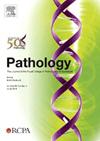Influenza epidemiology and co-infections within New South Wales-based multicentre health districts between 2018 and 2023
IF 3
3区 医学
Q1 PATHOLOGY
引用次数: 0
Abstract
Influenza epidemiology spanning pre-COVID-19 pandemic to post-COVID-19 pandemic periods in Australia is insufficiently described. This study reviewed influenza epidemiology in two metropolitan New South Wales (NSW) health districts between 2018 and 2023 and investigated influenza virus (IFV) co-infections with other respiratory viruses (ORVs). A retrospective analysis of diagnostic polymerase chain reaction data from patients requiring testing for IFV and/or ORVs was conducted. Influenza detections were exceptionally low (n=57, <0.2% positivity) between April 2020 and 2021 when compared to those in 2019 (n=3,312, 14.4% positivity). Subsequent relaxation of public health measures corresponded with increased positivity rates: from 0.1% (33) in 2021 to 2.1% (4,028) in 2022 and 3.8% (4,362) in 2023. Influenza A virus (IAV) activity peaked earlier in 2022 and 2023 compared to most prepandemic years. Influenza B virus (IBV) detections were notably higher in 2019 and 2023. Co-infections were identified in 17.2% (346/2010) of IFV-positive samples, with rhinovirus being the most frequent co-infecting virus (7.4%). Severe acute respiratory syndrome coronavirus 2 (SARS-CoV-2) was only detected in 1.3% of IFV infections. Logistic regression revealed significantly higher odds of IFV co-infections in children aged under 5 years [odds ratio (OR) 8.18; 95% confidence interval (CI) 5.44–12.29; p<0.01] and in those aged 5–17 years (OR 2.45; 95% CI 1.59–3.77; p<0.01). A significant increase in the likelihood of IFV co-infection was also observed in 2022 (OR 2.42; 95% CI 1.23–4.75; p<0.05). This study described influenza epidemiology across pre-COVID-19 pandemic, during-COVID-19 pandemic, and post-COVID-19 pandemic periods in NSW. Key findings include the earlier IAV peak activity in 2022–2023 and a rapid increase in IBV detection rate from 2022 to 2023, underscoring the need for sustained influenza surveillance to monitor the persistence of these trends. The surge in influenza detections in 2022–2023, accompanied with increased testing volumes, suggests that future surveillance efforts should account for changes in rates of testing when assessing severity of influenza seasons. The higher IFV co-infection frequency was observed in children and adolescents. ‘Flurona’ cases remain infrequent and exclusively associated with IAVs. These insights also inform the future application of multiplex diagnostic methods.
2018年至2023年新南威尔士州多中心卫生区内的流感流行病学和合并感染。
澳大利亚从covid -19大流行前到covid -19大流行后的流感流行病学描述不足。本研究回顾了2018年至2023年新南威尔士州两个大都市卫生区的流感流行病学,并调查了流感病毒(IFV)与其他呼吸道病毒(orv)的合并感染。对需要检测IFV和/或orv的患者的诊断性聚合酶链反应数据进行了回顾性分析。流感检出率极低(n=57);
本文章由计算机程序翻译,如有差异,请以英文原文为准。
求助全文
约1分钟内获得全文
求助全文
来源期刊

Pathology
医学-病理学
CiteScore
6.50
自引率
2.20%
发文量
459
审稿时长
54 days
期刊介绍:
Published by Elsevier from 2016
Pathology is the official journal of the Royal College of Pathologists of Australasia (RCPA). It is committed to publishing peer-reviewed, original articles related to the science of pathology in its broadest sense, including anatomical pathology, chemical pathology and biochemistry, cytopathology, experimental pathology, forensic pathology and morbid anatomy, genetics, haematology, immunology and immunopathology, microbiology and molecular pathology.
 求助内容:
求助内容: 应助结果提醒方式:
应助结果提醒方式:


